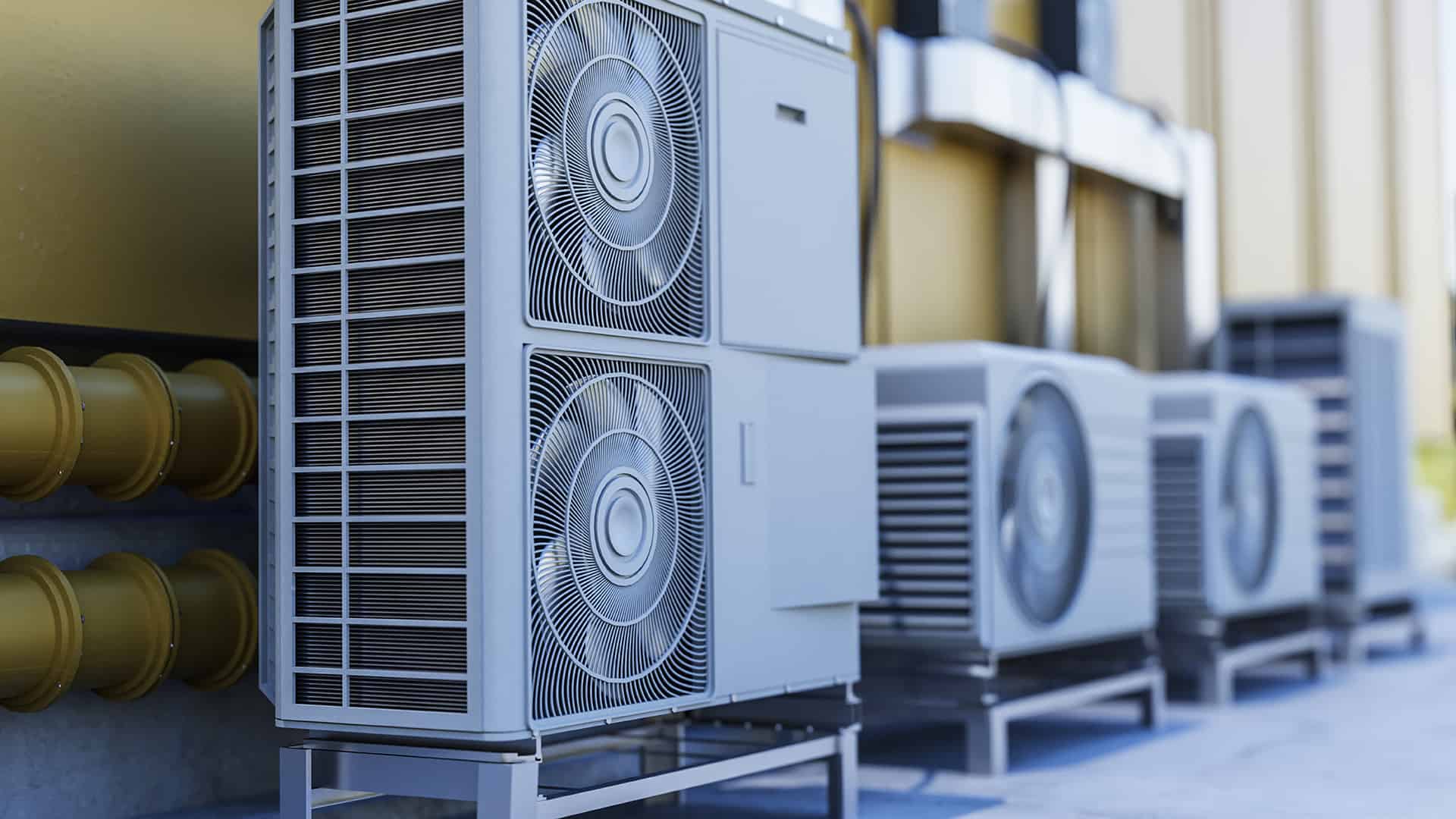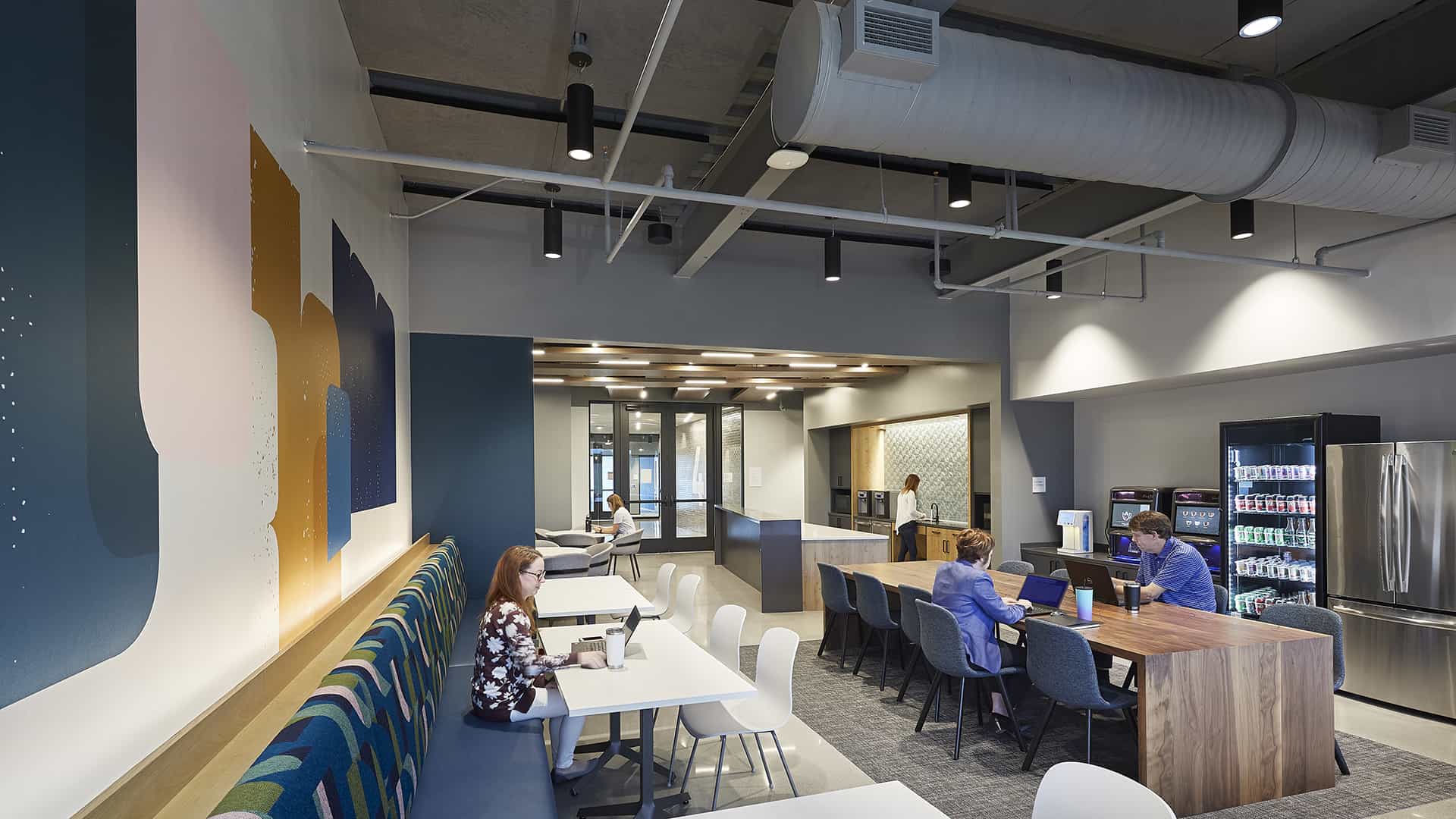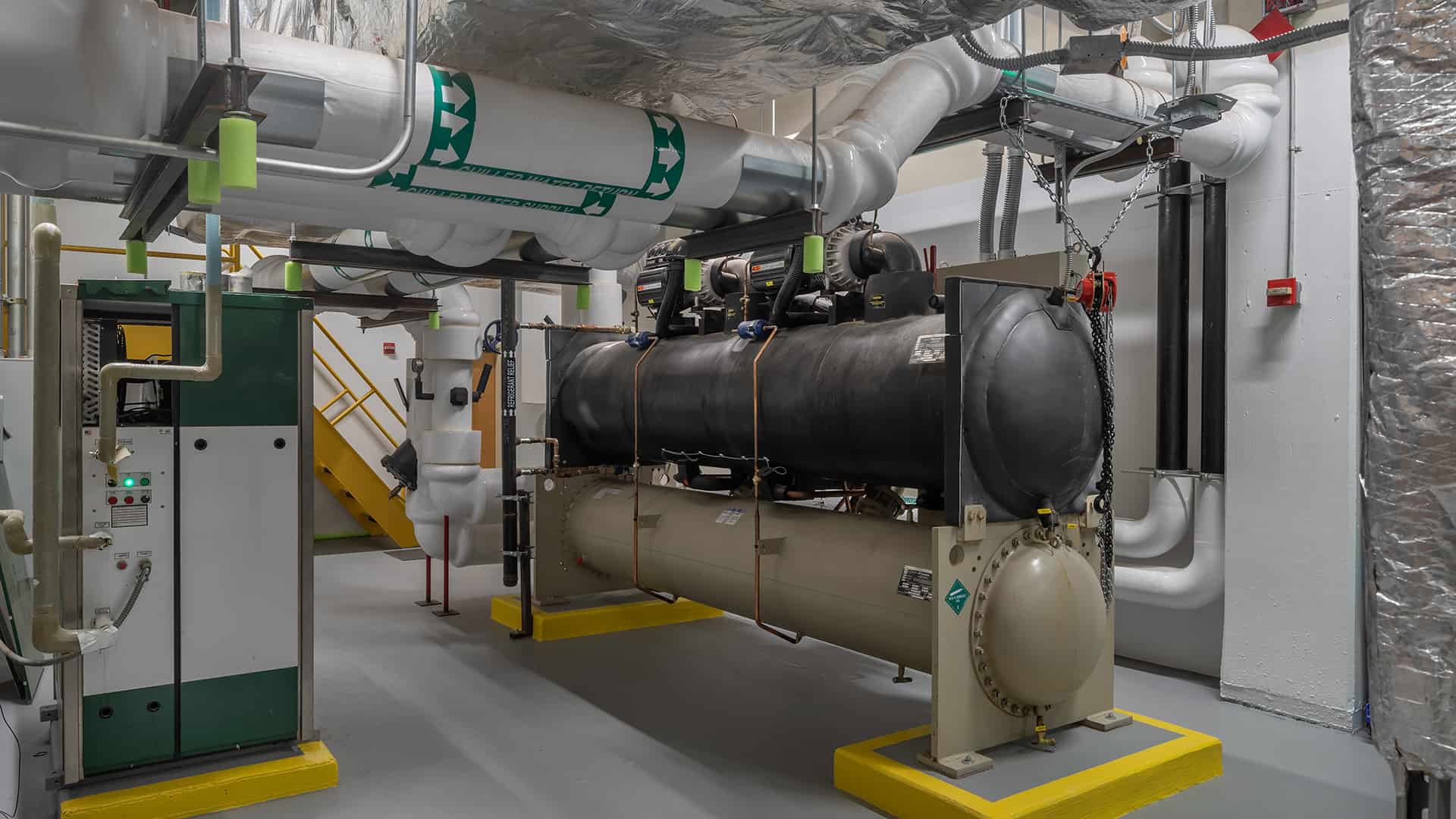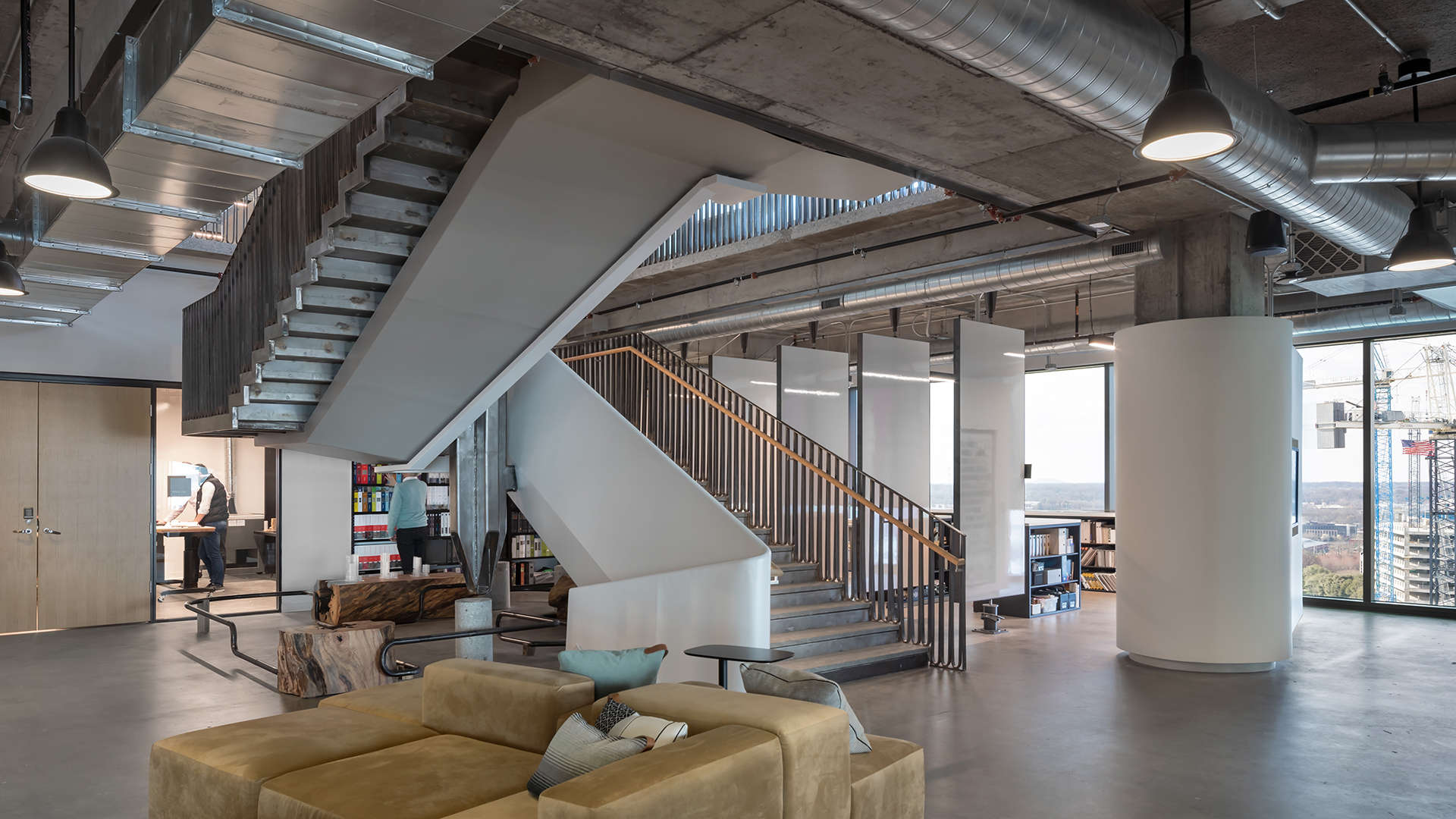As winter tightens its icy grip across the country, the demand for effective and up-to-date heating solutions becomes—dare, I say—a hot topic. Stepping away from traditional heating methods and reducing our fossil fuel reliance isn’t without its hurdles. What factors should be considered when moving toward 21st-century heating practices? To understand heating, we must first look at cooling.
A CRASH COURSE IN THERMODYNAMICS
To quote a Kevin Smith movie from the late 90s, “No pleasure, no rapture, no exquisite sin greater … than central air.” Doesn’t everyone look at their air conditioning system with awe and wonder? I mean, I’ve turned it into a whole career, and it’s—so far—worked out well.
For those among us who didn’t have an 8:00 a.m. thermodynamics class in college, most air conditioning systems work like your fridge.1 There’s a big coil on the inside and another on the outside, with some piping and a compressor between them. Through the power of vapor compression cycles, it takes the heat from inside the fridge and moves it into your kitchen.2 Direct expansion HVAC systems—basically any system with refrigerant—work the same way.
What if we could run these systems backwards? Spoiler alert—we can! By using a reversing valve, we can take heat from outside and bring it back in. Using our refrigerator example, this would be like a fridge that could keep things warm and hot instead of cool and cold.3 These air conditioning systems with reversing valves are called heat pumps.4 In recent years, the HVAC industry and manufacturers have been applying this technology to more and more equipment. So now, we have three sources of heat: combustion,5 electric resistance,6 and heat pumps.

A SHIFT TOWARD ELECTRICITY
Of these three sources of heating, electric resistance and heat pumps are powered through electricity, while combustion is fuel-powered. As more emphasis is placed on decarbonization and carbon emissions, fossil fuel combustion is phasing out.7 This shifts the burden of heating buildings onto the electrical grid. Both electric resistance and heat pumps are powered from the same source, but there are a few notable differences between them. Electric resistance heaters are fairly easy to install and have minimal moving parts. Heat pumps provide both heating and cooling and are more energy efficient.
For areas dominated by the need for cooling, shifting to heat pumps isn’t too much of a problem since they’ve typically already accounted for the compressors in the power grid load calculations. The same is true for milder climates, like where I live in North Carolina.
But, in the frozen north, this can be a big problem. The weather there requires a lot of heat, usually supplied through the traditional approach of burning fuel for heating. However, the electrical grid isn’t quite ready for a substantial increase in demand for electric heating. The last thing we want is to electrify our buildings and experience power shortages–especially during cold, snowy weather.8
MODERN HEATING SOLUTIONS
How do we solve these problems? We must make sure buildings are properly heated AND reduce our dependence upon fossil fuel combustion. Seems like these two goals are at odds, huh? I’m going to assume that for most of us, packing everything up and moving to a nice sunny and breezy island in the Mediterranean isn’t an option.
As my parents often recommend, the first thing we should consider is to “put on a sweater.” While we don’t need to wear every stitch we own, we can lower temperature set points a bit without sacrificing comfort. Using the thermal comfort standard issued by ASHRAE, we can evaluate how many people will be satisfied with the temperature of a space based on a variety of factors.9 Keeping a sweater handy is an easy fix since building occupants can easily adjust based on their personal thermal comfort. Many already keep blankets and sweaters at their desks because thermostats are often set quite low in offices during the summer.10

Now that we’ve donned our sweaters, let’s evaluate the HVAC system. It’s a bit technical, but we need to look at a few things. First, what are the possible solutions for an HVAC system in conjunction with the building? Simply ripping out a brand new, fully functional furnace system to put in a heat pump solution isn’t cheap. The first two things to consider are “How old is the existing system?” and “What does the project need heat for?”
The older a system and building get, the closer they are to their end of life. Most HVAC systems have a similar life expectancy to cars and trucks—about 15-20 years, depending on how well it has been maintained. To my knowledge, most manufacturers don’t offer leases of HVAC systems, sadly.11 As systems approach the end of life, we’ll evaluate the best replacement solution. This evaluation is often done on a case-by-case basis, but for small systems like split system furnaces, they can be swapped out with heat pump systems.12
Recent tech advancements allow heat pumps to work in temperatures as low as 0 degrees Fahrenheit.13 This applies to larger equipment too. Air-cooled and water-cooled chillers can now not only to reclaim waste heat for the building but also produce hot water through vapor compression cycles.14 These heat pump technologies are often more efficient than pure electric resistance heaters.15

In some climates, the extra expense of heat pumps may not be justified by how often they’ll be used, such as in South Georgia. In other projects, fuel-fired heat still makes sense, especially where heat is a by-product of another process, like using steam in a manufacturing plant. But for most needs, especially comfort heating, we can use heat pump technology in some manner, and use either electric or fuel-fired heat to supplement as a back-up where needed.
IN CONCLUSION
This may not have been as fun as those 8:00 a.m. thermodynamics classes. Afterall, nothing quite compares to the excitement generated by those temperature-entropy diagrams, in my opinion. But remember, we have many options for keeping our buildings and ourselves warm. Thanks to recent technology, we can shift away from direct fuel combustion by using heat pumps smartly.
- The exception being evaporative cooling systems. These systems, such as cooling towers, swamp coolers, etc., spray water into the air where some of it evaporates, cooling things off. ↩︎
- In the ”ideal” world of physics, this is heat engine or reverse Carnot cycle. See also, perfect vacuums, frictionless ramps, and other impossibilities. ↩︎
- Obviously, this kind of fridge would be useless since we use them to keep things cold to prevent food spoilage. But it works as an example. ↩︎
- Because they pump the heat where they are told to pump heat. Not very creative, I know. ↩︎
- AKA fire. Typically, from fossil fuels and, occasionally, wood or biogas. ↩︎
- Like a toaster which passes electricity through a resistor that heats up. ↩︎
- Technically, equivalent CO2 emissions, known as CO2e. Methane, refrigerants, and other gnarly fluids and gasses have a CO2e rating. ↩︎
- Power shortages and brown outs, like the scene in National Lampoon’s Christmas Vacation when Clark Griswold turns on the Christmas lights. ↩︎
- Standard 55 – Thermal Environmental Conditions for Human Occupancy. ↩︎
- Usually women. Women’s clothing tends to have less of an insulative effect due various to fashion trends. Now couple this with the history of spaces having the thermostat set for the comfort of someone wearing a three-piece suit and sitting in the C-Suite, and you get a rather chilly office. ↩︎
- Some do offer performance energy contracts, which is kinda-sorta, but not so much similar. We’ll save that for another article. ↩︎
- This system type is common in single family residential homes. ↩︎
- That’s negative 17°C for the metric crowd. ↩︎
- See? That fridge analogy wasn’t a waste of time. ↩︎
- For electric heaters, you get out what you put in, usually a coefficient of performance (COP)of 1. Heat output divided by the work to get that heat. For the COP heat pumps, it’s usually plus or minus 3. ↩︎

